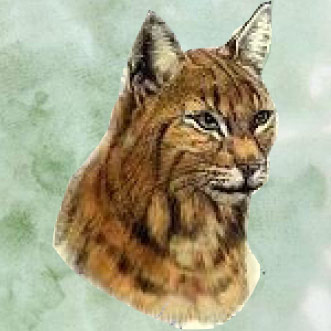Bobcat
By thevlm In UncategorizedOne of the more secretive and fascinating mammals found in Virginia is the bobcat (Lynx rufus). Bobcats are adaptable, predatory members of the North American cat family. The only wild feline still found in the state, they are common in the Dismal Swamp and the mountains of Virginia and are rarely seen in other areas. They can occupy a wide variety of habitats from coastal swamps to upland forests. Den sites range from rocky outcrops to dense thickets.
Named for its short, bobbed, stubby tail the bobcat is smaller than its northern cousin the Lynx and twice as big as a large domestic cat. It is tawny in color with black-tufted ears and black spotting. The tail is tipped with black on the dorsal side. Bobcat eyes are yellow with black pupils. This cat is quite muscular and its hind legs are longer than its front legs, giving it a bobbing gait. Females can weigh up to 20 pounds and males have been known to reach over 30 pounds. They can live up to ten years in the wild and 32 years is the record in captivity.
Bobcats are predacious carnivores that prefer rabbits and small rodents. They are excellent climbers and also will feed on birds, fish, insects and, on occasion, young deer. Feeding occurs from dusk until dawn as they move quietly through the night stalking their prey and then ambushing it with a short chase or pounce.
These cats are usually solitary animals, except when a female is with her kittens or during mating season. They are sexually mature at one year of age. They breed from winter into the spring and have a gestation period of around 60 days. Two to four furred, blind kittens are born in the late spring and they are weaned by eight weeks of age.
Bobcats have few predators other than man. Kittens may be taken by owls, eagles, foxes as well as the occasional hungry coyote. Other causes of death include diseases, automobiles and starvation. Humans have hunted and trapped these cats for hundreds of years for sport and their fur. Despite our negative influence, their numbers in the wild remain steady.
The female cat on display at the Virginia Living Museum was a pet in the Midwest and then raised by a wildlife rehabber in North Carolina. She is a solitary animal and prefers it that way based on our previous attempts to introduce her to other cats.
Help pay for my food and care at the Virginia Living Museum by adopting me today.







No Comment
Sorry, the comment form is closed at this time.